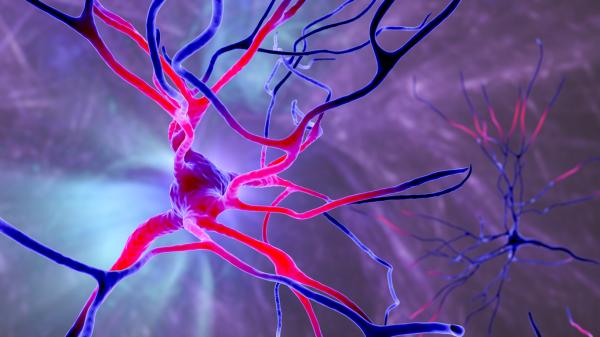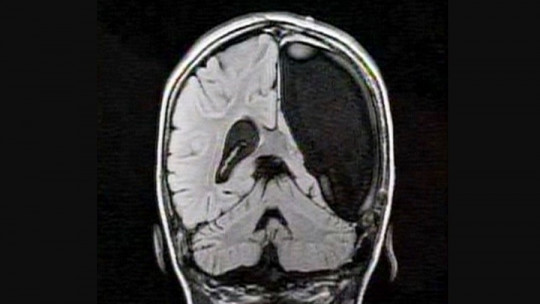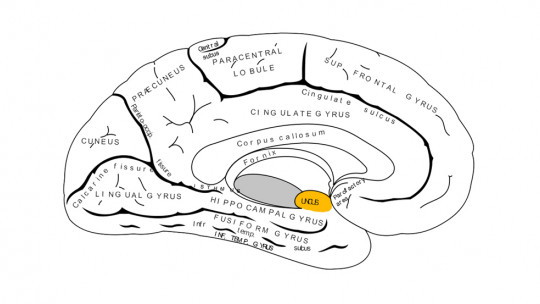Has it ever happened to you that half of your face and body have lost mobility and strength? Have you noticed certain strange sensations in that half? Maybe it has happened to you or you know someone who has experienced it. The truth is that something that happens to many people in the world, suddenly the right or left part of the body does not respond as it used to and problems begin. When these types of situations occur, we are facing hemiparesis. Do you want to know more about this? In this PsychologyFor article, we will provide you with information about Hemiparesis: what it is, symptoms, types, causes and treatment
What is hemiparesis
When we talk about hemiparesis, we are referring to a difficulty performing movements that occurs in one of the two halves of the human body On the other hand, this implies a loss of strength on the affected side of the body. In most cases, hemiparesis is related to partial cerebral palsy that affects mobility that goes from the leg, through the trunk and ending in the arm. On some occasions, it is also possible that a sector of the face appears altered. However, we must highlight that the other half of the body remains unchanged in terms of the movements that can be performed.
Symptoms of hemiparesis
What are the symptoms of hemiparesis and how is it diagnosed? There are a series of symptoms that allow the diagnosis of hemiparesis. Next, we will mention the most relevant ones:
- Loss of balance
- Difficulty speaking
- Behavior changes
- Alterations in memory and learning new content
- Loss of sensation on one side of the body and/or in the extremities
It is important to know that the presence of any of these symptoms does not mean that a person has hemiparesis. The health professional will be in charge of making the diagnosis taking into account other important criteria in addition to the symptoms.
Types of hemiparesis
When we talk about this condition, we must know that there are five types of hemiparesis. The form of clinical presentation will determine the type of hemiparesis that the person has. The different types of hemiparesis are:
- Right spatic hemiparesis: The person has difficulties in understanding and speaking. This type of hemiparesis is caused by lesions on the left side of the brain.
- Left spatic hemiparesis: The person presents behavioral problems, difficulty learning new content, alterations in communication, among others.
- Pure motor hemiparesis: In these cases, difficulties appear in the mobility of an arm, a leg and/or the face on one side of the body. It can occur on both the right and left sides.
- Ataxia: It is common for there to be difficulties in coordination, problems with vertigo and loss of balance. This type of hemiparesis is caused by lesions in the lower sector of the brain.
- Ataxic hemiparesis syndrome: numbness of a sector of the body, especially the leg.
Causes of hemiparesis
What causes hemiparesis? There are several reasons that cause hemiparesis, and the evolution of the condition will depend on the characteristics of each person. This means that the person’s age, medical history, and lifestyle directly influence the development of the type of hemiparesis that occurs. Next, we will describe the most common causes of hemiparesis:
- Accidents that cause injuries to some area of the brain, including stroke (Crebro Vascular Accident) and cerebral venous thrombosis.
- Neurological diseases that directly affect the brain and/or bone marrow.
- Cancer that spreads to the brain.
It is important that we know that Hemiparesis occurs when the amount of blood in the brain decreases This can cause many neurons to stop functioning correctly and some areas of the body to be altered.

Treatment of hemiparesis
Beyond the type of hemiparesis that a person may present, there are some treatments that can improve the patient’s prognosis Currently, it is possible for a person who has hemiparesis to be treated through different health professionals. Treatments for hemiparesis are as follows:
- Physiotherapy: The patient can progressively recover mobility in the affected areas through some physical exercises. One of the physical therapies that has the best results is neuroplasticity, which consists of connecting certain neurons to healthy areas of the brain. Other methods that can help regain mobility are mirror therapy, FitMi home therapy, among others. A qualified professional will prescribe the necessary hemiparesis exercises for each patient.
- Psychological therapy: In many cases, the patient may feel fear, anguish and/or anxiety about the affected areas of the body. Regardless of the cause of hemiparesis, it is possible that this produces unpleasant emotions and thoughts. Psychological therapy can help resolve the conflicts caused by hemiparesis.
This article aims to provide information, at PsychologyFor we do not try to provide a diagnosis. We suggest you consult with a mental health specialist so they can help you.
This article is merely informative, at PsychologyFor we do not have the power to make a diagnosis or recommend a treatment. We invite you to go to a psychologist to treat your particular case.
If you want to read more articles similar to Hemiparesis: what it is, symptoms, types, causes and treatment we recommend that you enter our Neurosciences category.
Bibliography
- Eliasson AC, Krumlinde-Sundholm L., Rosblad B., Beckung E., Arner M., Ohrvall AM, Rosenbaum P. The Manual Ability Classification system for children with cerebral palsy: scale development and evidence of validity and reliability. Department of Medicine and Neurology for Children, July 2006; 48 (7), pp. 549-554.
- Flint Rehab. Neuroplasticity after stroke: How the brain rewires itself to recover after an injury. Recovered from https://www.flintrehab.com/es/neuroplasticidad-despues-del-accidente-cerebrovascular
- Novak, I. Evidence-based diagnosis, medical care and rehabilitation for children with cerebral palsy. Journal of Child Neurology 2014, Vol. 29 (8) 1141-1156








